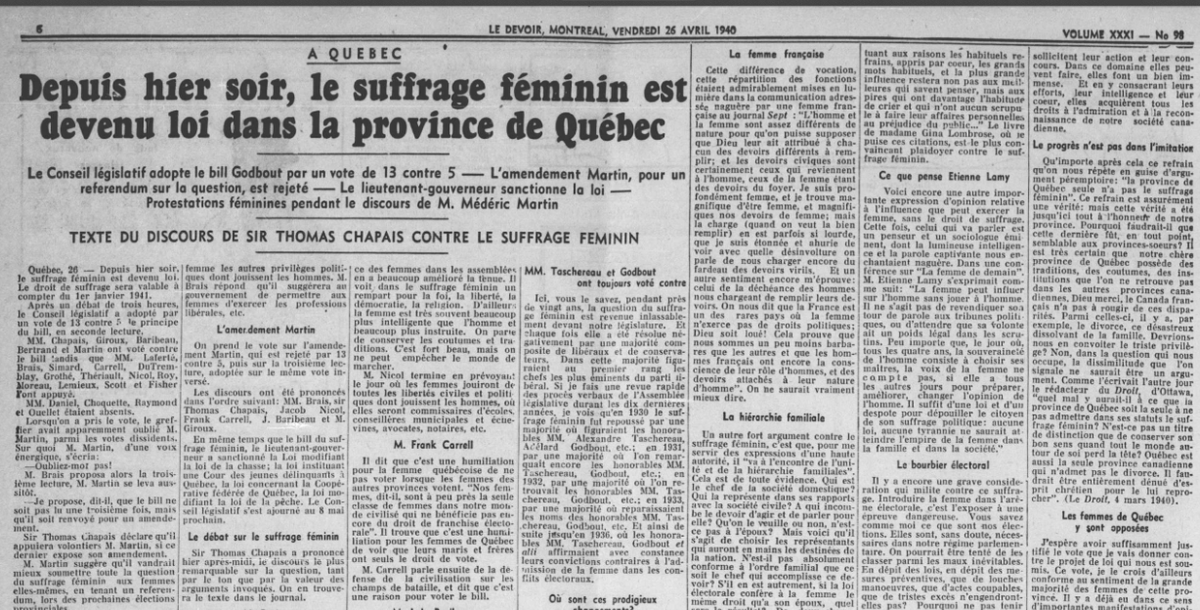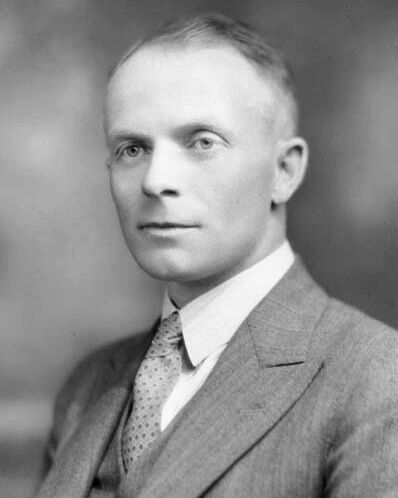During World War II, Quebec was in a transitional period. Even though traditions were still very prominent, a wind of modernity was blowing throughout the province. While Maurice Duplessis’ government was mainly conservative and traditional, Adélard Godbout’s government was more modern and progressive.
Elected in 1939 under the Liberal Party, Adélard Godbout proposed various measures to reduce the gap between Quebec and the other Canadian provinces. He later lost in 1944 because of his support for the plebiscite on conscription.
As soon as he came to power, Adélard Godbout wanted to grant women in Quebec the right to vote. Leading up to this, the province of Manitoba had granted women the right to vote in provincial elections in 1916, and women won the right to vote in federal elections in 1918. All provinces had gradually followed suit, except Quebec.
There were several reasons for this, among which the fact that Maurice Duplessis’s government and the Catholic Church strongly opposed women’s suffrage. Quebec society also clung to traditional values. When Adélard Godbout came to power in 1939, he distanced himself from conservatism and granted women the right to vote in provincial elections, making Quebec the last Canadian province to grant women’s suffrage.

At that time, the Catholic Church was in charge of education, and the government rarely got involved. Since there was no standardized education program, the quality of the courses varied greatly from one institution to another. Many children did not attend school, especially in rural areas. Those fortunate enough to receive an education rarely pursued higher education. School was expensive and was not a priority for most people. This was especially true among Francophones and Catholics.
To change this situation, Adélard Godbout’s government implemented various measures to make education more accessible to the population. In 1943, school became mandatory for all children between the ages of 6 and 14, and parents who failed to comply were fined. Godbout’s government also introduced a measure to make public primary school free.
Adélard Godbout’s liberal government also initiated the nationalization of electricity.
Nationalization is when the government becomes the owner of a company. The profits made by this company belong to the government, which can reinvest them into the company.
While the large hydroelectric companies were previously owned by foreign companies, Godbout’s government bought some of them and founded Hydro-Québec in 1944. The rates then dropped, which helped bring electricity to several districts and cities.

Godbout’s government also introduced unemployment insurance and a family allowance program in partnership with the federal government.
Even though the majority of people lived in cities, many still lived in the countryside. There were fewer and fewer farms and the ones that remained were larger. Electrification gave farmers access to several tools, but many could not afford them. In order to help them, the federal government introduced the Farm Improvement Loans Act in 1944.

New farming techniques facilitated and increased production and experimental farms were created to develop new seeds and products to fertilize fields.
